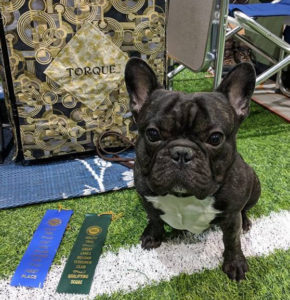Everybody has the conversation with friends or family: “What do you want to do?”
“I don’t know. What do you want to do?”
“I dunno.”

So nothing gets done. Or you wind up doing something that nobody’s really enthusiastic about. Or, worst case scenario, you do something you don’t really want to, because somebody else overpowered your inclination.
It’s a good idea to figure out what you want from your dog. And from training. As you learn more about dog training, your objectives and ambitions may change. It’s fine to shift gears and change your focus. It’s the way real progress is made.
We had a conversation today with a woman who got her dog from a breeder with the condition that she trained her dog to compete and succeed in performance events. Many breeders who build their reputations on the soundness and intelligence of their dogs have similar stipulations. We know one person who refunds a portion of the price paid for a puppy for every title earned.
The woman we spoke to was torn. She really enjoys “fun” stuff with her dog. They’ve earned some trick titles and enjoy training. But the breeder wasn’t impressed with that and is pressuring her to dive into competition obedience. She called us asking whether obedience or rally obedience would be a better fit.
You choose
After explaining the differences between the two, Hope invited the woman to observe our obedience club’s classes and make her decision after seeing what each is about. She and her dog should enroll in the class that she wants, that she feels is most suited to her training style, preferences, and dog’s ability. The one they’ll have the most fun with!
And that’s the whole point of continuing to train with your dog. Every single day we get to play with our dogs, grow their brains, build our bond, and develop a better relationship with the family and life in general. Dogs who are well-balanced, curious, know how to adapt and grow, will know how to get along in our human world.
What do you want?
Once you’ve developed the skill and tools to play training games with your dog, you may find yourself at a crossroads. The manners you hoped to teach your pup are well on their way.
Once you’ve solved the problems, are you going to forego the games?
You shouldn’t! You now know you can teach your dog anything you want. Your dog is even coming up with new behaviors just to have fun and make you laugh.
The woman we spoke to today said her dog, now two years old, even knows how to tell time. She’s been in the habit of taking him through his trick repertoire every day at the same time. When that time gets close, she can see his excitement grow. He starts prancing around, letting her know he’s ready to have some fun.
Keep having fun with your dog! It may lead you to explore the dog sports venues, or not. Whether or not you choose to pursue dog training for a hobby, continuing to play training games with your dog will enrich your lives, keep your dog sharp, and remind both of you that there’s time, every day, to have some fun.

